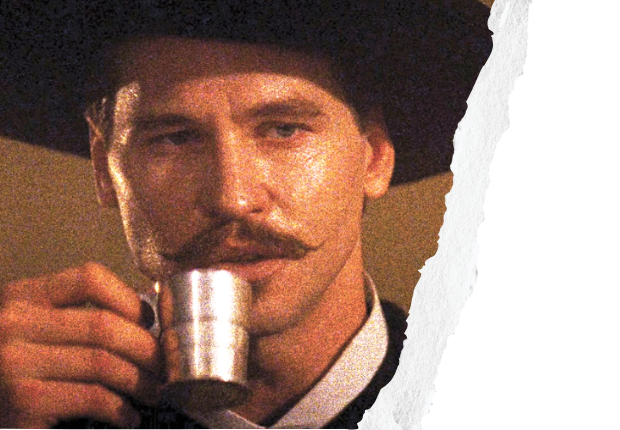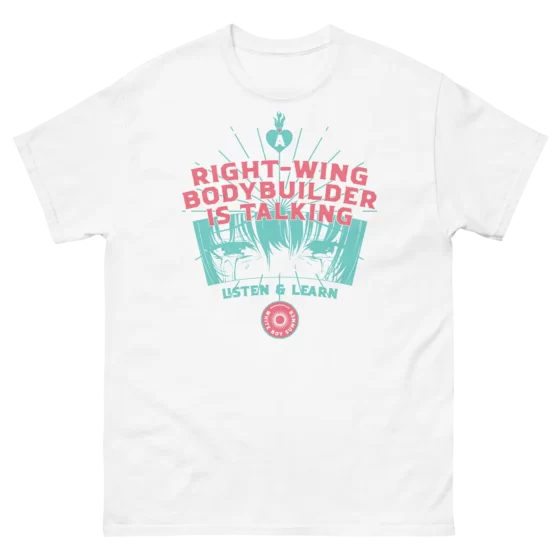High Noon
Peace through violence. Order through fraternity. Victory of the indomitable Western spirit over the American frontier. These are the timeless themes which Tombstone (1993) explores.
As a work of film-making, Tombstone is perfect, and this is not an accolade I would dare to assign lightly. Plot, pace, character, set, cast — try as you might, you will not be able to find a single blemish on this great cinematic portrait. This is no mere country-western film: this is family drama, this is action, this is suspense, fantasy, and romance, all rolled into one. This film hits every target, and misses none.
Wyatt Earp is a retired sheriff seeking a peaceful and wealthy retirement in Tombstone, Arizona, a 19th century gold-mining town. He arrives with his two brothers, their wives, and meets his dear old friend Doc Holliday before investing in the Faro table at the local saloon. Here, Wyatt’s character is first revealed: a drunken bandit has taken over the table and driven all the high-class patrons out of the bar, but Wyatt, without a moment of hesitation, calmly expels him with force of will (and a few slaps across the face).
We’re then introduced to the antagonists, the lawless cowboys, a roaming brotherhood of gamblers, murderers, and thieves who have established their own extra-legal mafia on the frontier. The local authorities beg Wyatt to help keep the law, but he wants none of it. He’s here to make money, and to live in peace. He’s already kept plenty of peace elsewhere, and has earned a retirement. “I already got a guilty conscience, might as well have the money, too.” The conflict escalates when the beloved old marshall is shot dead in a drunken accident by a cowboy, and Wyatt’s brothers are guilted into signing up to become the new law enforcement of the town. Wyatt begs them to reconsider, but they do not.
Faulkner wrote that “The only thing worth writing about is the human heart in conflict with itself.” In this moment, Wyatt’s heart is torn, and he is forced to choose: his family or his pursuit of peace.
He chooses his family, and rejoins his brothers in law enforcement. They decree that guns are no longer allowed in town, a legal manoeuvre meant to discharge the threat of the Cowboys, but in practice it only provokes them. What follows is the famous “Shootout at the O.K. Coral”, which begins with Wyatt, his two brothers, and his best friend, Doc Holliday attempting to disarm the cowboys who are openly defying the law by carrying guns in town.
The heroes survive, but the conflict is now escalated into total war: Wyatt’s younger brother is killed in an ambush that night, and his older brother is shot and incapacitated. Only Wyatt, and his will to restore order, deliver justice by force to the cowboys, remains.
The film’s entire theme is elucidated in one short shot when Wyatt, after embracing the call to action, opens his dresser to pull out a gun inscribed with the name “Peacemaker”. This detail is seemingly meaningless during the first viewing, or just a neat little bit of trivia, perhaps. No — this is the key moment for Wyatt and the key message of the film all wrapped up in a few seconds of screen-time. All Wyatt wants is peace; but he has to make it with violence.
He also needs to make peace with the help of a mannerbund: with his two brothers, and with his closest friend. Wyatt sees his world dissolving into chaos around him, but in the end, the only thing that ultimately calls him to action is the love that he feels for them. If he didn’t have these fraternal connections, he never would have reached into that drawer and taken out the gun. He never would have chosen peace through violence. But Tombstone shows us the power — the immense, world-changing power — of true friendship, and of blood. Asked why he would risk his rich life to team up with Wyatt on his mission, Doc Holliday replies: “Wyatt Earp is my friend.” “Hell, I’ve got lots of friends,” comes the retort. Then the counter: “I don’t.”
As if to drive the point home that this is a film for our tribe, Tombstone features a subplot: Wyatt slowly distances himself from his nagging wife who lays in bed and scrolls Instagram all day (she drinks Laudanum, actually, an opiate – but what’s the difference?) when she’s not guilt-tripping him for spending time with his friends or going out and making money for her benefit. Meanwhile he courts a care-free (read: “loose”) actress called Josephine, who makes him question what’s really important in life. There is a scene where she tells Wyatt, “ I’m a woman, I like men. If that means I’m not lady-like, then I guess I’m just not a lady.” Wyatt replies: “You’re different. No arguin’ that. But you’re a lady. I’d take my oath on it.” Wyatt is enchanted and vitalized by this polarity, and his growing attraction for her is interwoven in thematic sequence so as to emphasize the greater narrative of spiritual awakening. After he puts an end to the cowboys, he returns to her arms and commits to spending the rest of his days on the road enjoying room service with her. The subplot is not meant to serve as an indictment of marriage per se, but rather it serves as a display of constricted private life, its effects on masculine spirit, and the antidote; it’s meant to complement the broader narrative, and show how and why Wyatt is shaken out of a sunken type of life and swept up into a higher calling.
The main plot and subplot both serve to revitalize the ancient Western spirit in Wyatt Earp. There is no peace that is not taken and held by force. Happiness isn’t found in settling down, but rather in conquering, in going out and securing territory. Want to move from chaos to order? Pick up your gun and make it so. In the absence of greater law and order, brotherhoods must exert their own. In the face of pillaging, of violence, of lawlessness and chaos, the only hero is the “Peacemaker”. Tombstone checks every single box a film should check, and it does so while presenting a positive message for sensitive young men, an ideal toward which they can aim in every aspect of their lives.
































